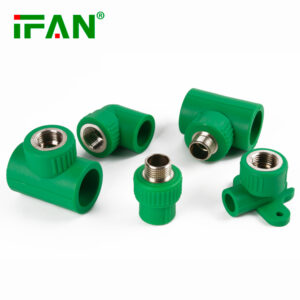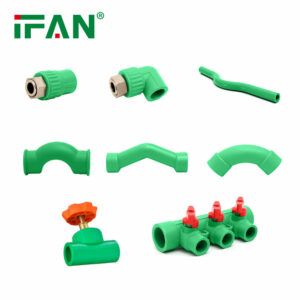
EN 15874 PPR Fittings Maintenance: Ensuring Longevity in Your Plumbing System
Whatsapp Us
Share
Description
IFAN factory 30+ years manufacture experience support color /size customization support free sample.Welcome to consult for catalog and free samples.This is our Facebook Website:www.facebook.com,Click to watch IFAN’s product video.Compared with Tomex products, our IFAN products from quality to price are your best choice, welcome to buy!
When it comes to plumbing systems, PPR fittings are a popular and reliable choice. Known for their durability and resistance to high temperatures and pressures, PPR fittings (Polypropylene Random Copolymer fittings) have become an essential part of modern plumbing installations. However, like any other component of a plumbing system, PPR fittings require proper maintenance to ensure their longevity and optimal performance. In this article, we will explore essential maintenance tips for PPR fittings, helping you preserve their functionality and extend the lifespan of your plumbing system.
What Are PPR Fittings?
PPR fittings are made from a type of plastic called Polypropylene Random Copolymer. These fittings are used to connect PPR pipes in plumbing systems, primarily for water supply and heating systems. Their robust construction ensures resistance to corrosion, chemicals, and high temperatures, making them suitable for both residential and commercial applications.
These fittings are often used in conjunction with PPR pipes to form a seamless, durable plumbing network that offers excellent performance over the years. However, regular maintenance is essential to prevent issues such as leaks, clogs, and other damage that could compromise your system’s effectiveness.
The Importance of Maintaining PPR Fittings
Proper maintenance of PPR fittings ensures that your plumbing system functions smoothly and without interruptions. Neglecting the maintenance of PPR fittings can lead to problems like:
– Leaking Connections: Over time, PPR fittings may loosen or wear down, causing leaks.
– Clogging: Debris or scale buildup inside the pipes can lead to blockages that affect water flow.
– Reduced Efficiency: Without proper maintenance, PPR fittings may deteriorate, reducing the efficiency of the entire plumbing system.
By following a few simple maintenance steps, you can ensure that your PPR fittings continue to perform at their best.
Essential Maintenance Tips for PPR Fittings
1. Inspect the Fittings Regularly
One of the most important steps in maintaining PPR fittings is to perform regular inspections. Check for signs of wear and tear, such as cracks, discoloration, or visible leaks around the fittings. If you notice any issues, replace the fitting immediately to prevent further damage to the system.
Tip: Inspect PPR fittings at least once every six months. This is especially important in areas with high water pressure or extreme temperatures, as these factors can cause fittings to deteriorate more quickly.
2. Clean the Fittings and Pipes
Cleaning the PPR fittings and pipes is crucial for preventing debris buildup, which can lead to clogs and decreased water flow. You can clean the fittings using a soft cloth and mild soap. Avoid using abrasive cleaning tools, as these can scratch and damage the surface of the fittings, potentially causing leaks or weakening the material.
For PPR pipes, use a water-based cleaner that is safe for plastic pipes. Periodically flushing the system with clean water can also help remove any buildup.
3. Check the Pressure Levels
Excessive water pressure can cause stress on PPR fittings, potentially leading to leaks or cracks. It is essential to monitor the pressure levels in your plumbing system to ensure they are within the recommended range. Most PPR fittings are rated for pressures up to 20 bar (depending on the pipe size and the manufacturer’s specifications). If the pressure exceeds this limit, it could damage the fittings.
Tip: Install a pressure-reducing valve if necessary to regulate the pressure in your plumbing system.
4. Avoid Overheating
PPR fittings are designed to withstand high temperatures, but excessive heat can cause the material to soften or deform, compromising the integrity of the fittings. Avoid exposing your plumbing system to temperatures above the recommended limit (usually 95°C for hot water systems).
Tip: Ensure that PPR fittings are installed away from direct heat sources, such as water heaters, boilers, or other high-temperature equipment.
5. Ensure Proper Installation
Proper installation is crucial for the longevity of PPR fittings. If the fittings are not correctly installed, they can develop leaks or other issues over time. Always follow the manufacturer’s guidelines during installation to ensure that the fittings are correctly aligned and securely connected. If you are unsure about the installation process, it is always best to consult a professional plumber.
Tip: Use a heat fusion machine for PPR fittings installation to ensure a tight, secure bond between the fittings and pipes.
6. Protect the Fittings from Physical Damage
While PPR fittings are resistant to corrosion and wear, they can still be damaged by physical impact. Avoid placing heavy objects on top of exposed pipes, and be cautious when working around plumbing systems. If the fittings are exposed to direct physical force, they may crack or break, leading to leaks.
Tip: If the fittings are installed in areas prone to physical impact, consider protecting them with a covering or shield to prevent damage.
7. Avoid Contact with Chemicals
Though PPR fittings are resistant to many chemicals, exposure to certain substances can weaken the material over time. Avoid using harsh chemicals or solvents around the plumbing system, as they can cause the fittings to degrade. If you need to use chemicals, ensure they are compatible with PPR material.
Tip: Always check the compatibility of any cleaning or maintenance products with **PPR fittings** before use.
8. Replace Damaged Fittings Promptly
Even with proper care, PPR fittings can become damaged over time. If you notice any signs of damage, such as cracks, discoloration, or leaks, replace the affected fitting immediately. Ignoring a damaged fitting can lead to more extensive damage in your plumbing system and potentially costly repairs.
Tip: Keep spare PPR fittings on hand for quick replacements in case of emergencies.
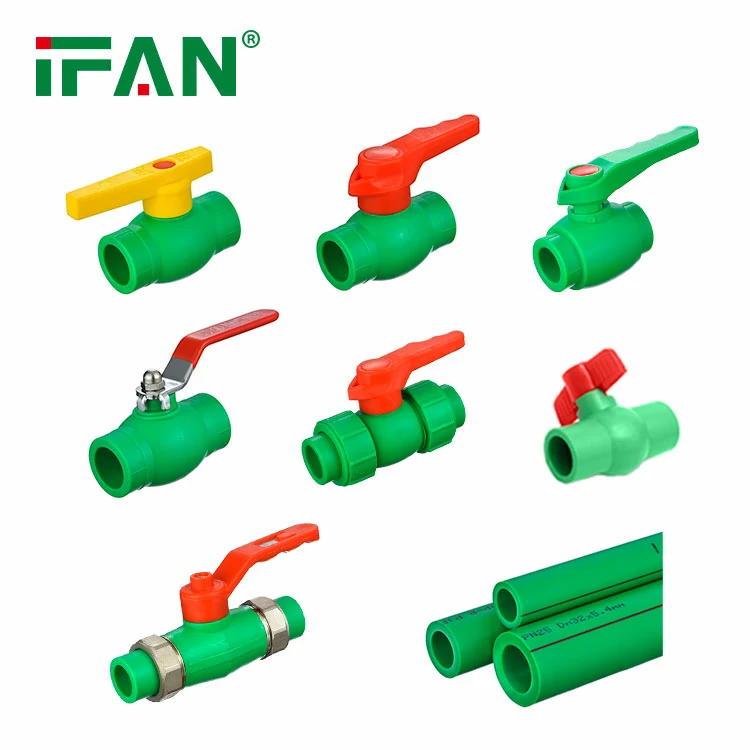
Benefits of Proper Maintenance for PPR Fittings
Maintaining your PPR fittings offers several advantages:
– Longer Lifespan: Regular maintenance can extend the life of your PPR fittings and plumbing system.
– Improved Performance: Proper maintenance ensures that water flow remains consistent, reducing the likelihood of clogs and leaks.
– cost Savings: Preventing issues through maintenance can save you money on expensive repairs and replacements.
– Increased Safety: Regular inspections and maintenance reduce the risk of water damage or plumbing failures that could compromise your home’s safety.
Common FAQ About PPR Fittings
1. How long do PPR fittings last?
With proper maintenance, PPR fittings can last up to 50 years. Their durability is one of the main reasons they are preferred for both residential and commercial plumbing systems.
2. Can PPR fittings be used for both hot and cold water?
Yes, PPR fittings are ideal for both hot and cold water systems. They are designed to withstand high temperatures, making them suitable for hot water applications.
3. How do I know if my PPR fitting is installed correctly?
A correctly installed PPR fitting will form a secure, leak-free connection with the pipe. If you notice any leaks or water pressure issues, the fitting may need to be reinstalled or replaced.
4. Can I repair damaged PPR fittings?
If a PPR fitting is damaged, it is best to replace it entirely rather than attempt to repair it. Cracks or breaks in the fittings can compromise the system’s integrity and lead to leaks.
5. Are there any chemicals that can damage PPR fittings?
Yes, harsh chemicals such as solvents and some cleaning agents can weaken PPR fittings. Always use products that are compatible with PPR material to avoid damaging the fittings.
Conclusion
PPR fittings are a durable and reliable option for modern plumbing systems. By following regular maintenance practices, you can ensure that your **PPR fittings** remain in excellent condition for years to come. Proper installation, regular inspections, and careful attention to the factors that affect their longevity will help you maintain a fully functional plumbing system, reducing the need for costly repairs and replacements. With a little effort, your **PPR fittings** will continue to perform at their best, providing a reliable and long-lasting solution for your plumbing needs.
Related products
-
PPR Fittings
Easy to Install Brass Fittings for DIY Projects
-
PPR Fittings
Plastic PPR Water Fittings
-
PPR Fittings
PPR Water Fittings
